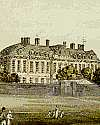
On 15 Jan 1759, the British Museum, in Bloomsbury, London, the world's oldest public national museum, opened to the public who were admitted in small groups, by ticket obtained in advance, for a conducted tour. It was established on 7 Jun 1753 when King George II gave his royal assent to an Act of Parliament on 5 Apr 1753 to acquire the collection of Sir Hans Sloane. In his will, he had offered the nation his lifetime collection of 71,000 objects, mostly plant and animal specimens. In return, he requested £20,000 for his heirs (which today would be over £2,000,000). The present museum buildings date from the mid-19th century. Its natural history collection moved to its own museum in 1881. The British Museum set up a laboratory in 1920 for its scientific studies. The General Guide to the British Museum Natural History (1898) describes the building which now houses the museum, which stands on part of the site of the International Exhibition of 1862 at South Kensington.

On 15 Jan 1900, Richard Bevan Braithwaite was born, a British physicist and mathematician who turned to the philosophy of science. Today's book pick is: Scientific Explanation: A Study of the Function of Theory, Probability and Law in Science, by Richard Bevan Braithwaite. The first chapters deal with models, theoretical terms and deductions, followed by chapters on probability and statistical hypotheses and concludes with an analysis of induction, causality and teleological explanation. His focus throughout is not on how science should work, but on how science does work.
It is available from Amazon, typically about New from $36.67. Used from $4.49. (As of earlier time of writing - subject to change.)
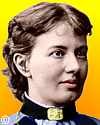 | It is impossible to be a mathematician without being a poet in soul. |
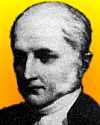 | I had come to the conclusion, that the principal alimentary matters might be reduced to the three great classes, namely the saccharine, the oily and the albuminous. |
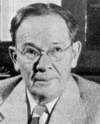 | It is evident, therefore, that one of the most fundamental problems of psychology is that of investigating the laws of mental growth. When these laws are known, the door of the future will in a measure be opened; determination of the child's present status will enable us to forecast what manner of adult he will become. |
| Before you look at today's web page, see if you can answer some of these questions about the events that happened on this day. Some of the names are very familiar. Others will likely stump you. Tickle your curiosity with these questions, then check your answers on today's web page. | |
| Births | |
| no image | A Hungarian-born American nuclear physicist, born 15 Jan 1908, participated in the production of the first atomic bomb (1945) and led the development of the world's first thermonuclear weapon, the hydrogen bomb. He is sometimes known as “the father of the H-bomb.” His unfavourable evidence in the Robert Oppenheimer security-clearance hearing lost him some respect amongst scientists. Can you name this scientist? |
 | On 15 Jan 1877, Lewis M. Terman was born, a U.S. psychologist who pioneered individual intelligence tests. During WW I, he was involved in mass testing of intelligence for the U.S. army. He introduced the IQ (Intelligence Quotient). What are the numerator and denominator in the Intelligence Quotient definition? |
| Deaths | |
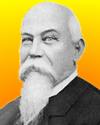 | Alpheus Hyatt (1838-1902) was a U.S. zoologist and paleontologist who studied invertebrate fossil records, the evolution of the cephalopods. Along with E. Cope, he was the most prominent American neo-Lamarckian. What are cephalopods? |
 | Oscar Auerbach, who died on 15 Jan 1997, was an American pathologist whose research showing that cigarette smoking was causally related to lung cancer, based on his examination of thousands of lung tissue samples. The work gained national prominence in the first Surgeon General’s Report on Smoking and Health. In which decade was the first Surgeon General's Report on Smoking and Health published? |
| Events | |
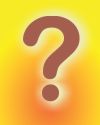 | On 15 Jan of a certain year, the first solar-heated and radiation-cooled house in the U.S. started its system. It was built by Raymond W. Bliss in Tucson, Arizona. The system was built at a cost of nearly $4,000 for labour and materials. It was made using a large slanting slab of steel and glass that converted sunlight into heat, which was ducted into the house. In what decade was this solar heating system started? |
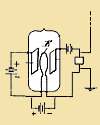 | On 15 Jan 1907, the three-element vacuum tube was issued a U.S. patent to its inventor, Dr Lee de Forest. What was the useful function of this tube? |
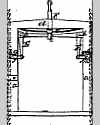 | On 15 Jan 1861, the safety elevator was patented as a “Hoisting Apparatus” by its American inventor. His invention was designed to arrest a fall in case of the lifting rope breaking. It used spring-loaded pawls that would release and engage in a mortised track in the walls of the shaft. Can you name this inventor who is well-known as an elevator manufacturer? |
Fast answers for the previous newsletter for January 14: cottonseed oil • Drunnkometer • crude oil • Charles Lutwidge Dodgson (pen name Lewis Carroll) • Henry Ford • Isle of Wight.
 If you enjoy this newsletter, the website, or wish to offer encouragement or ideas, please send feedback by using your mail reader Reply button.
If you enjoy this newsletter, the website, or wish to offer encouragement or ideas, please send feedback by using your mail reader Reply button. Your click on a Facebook, StumbleUpon, or other social button on the site webpages is also a welcome sign of appreciation. Thank you for using them.
© This newsletter is copyright 2020 by todayinsci.com. Please respect the Webmaster's wishes and do not put copies online of the Newsletter — or any Today in Science History webpage. (If you already have done so, please remove them. Thank you.) Offline use in education is encouraged such as a printout on a bulletin board, or projected for classroom viewing. Online, descriptive links to our pages are welcomed, as these will provide a reader with the most recent revisions, additions and/or corrections of a webpage. For any other copyright questions, please contact the Webmaster by using your mail reader Reply button.
--
If you do not want to receive any more newsletters, Unsubscribe
To update your preferences and to unsubscribe visit this link
Executive Real Estate Business Class
-
"It was like a man with wings. It wasn't like anything you'd see on TV or in a monster movie." ...
About the publisher
Search This Blog
Blog Archive
-
▼
2021
(585)
-
▼
January
(109)
- Ian Kershaw on why Hitler declared war on America
- On This Day for January 31 - Guy Fawkes executed i...
- Newsletter for Sunday 31 January.
- January 31: Slavery Abolished in the USA, Guy Fawk...
- On This Day for January 30 - “Great Soul” assassin...
- Newsletter for Saturday 30 January.
- January 30: Oliver Cromwell Ritually Executed, Mah...
- On This Day for January 29 - Iraq, Iran, and North...
- Newsletter for Friday 29 January.
- January 29: Romeo and Juliet, Coca-Cola and the Se...
- 'The Food That Built America' Is Back!
- On This Day for January 28 - Explosion of the spac...
- Newsletter for Thursday 28 January.
- Inside The Still-Mysterious Circumstances Of Heath...
- Demystified: What’s the Difference Between a Presi...
- On This Day for January 27 - Vietnam War ended, Wo...
- Newsletter for Wednesday 27 January.
- January 27: Kaiser Bill is Born, the Siege of Leni...
- You are now unsubscribed
- What The Wild West Actually Looked Like in 48 Reve...
- New Savings! $50 off Family Memberships
- On This Day for January 26 - First European settle...
- Newsletter for Tuesday 26 January.
- January 26: Catholic Counter-Reformation, British ...
- On This Day for January 25 - Claudius affirmed as ...
- Newsletter for Monday 25 January.
- January 25: São Paulo Founded, Charles Wilkes Disc...
- Queen Victoria and Prince Albert's marriage | Wors...
- On This Day for January 24 - Opportunity's Mars la...
- Newsletter for Sunday 24 January.
- January 24: Scouting for Boys, Apple's Macintosh a...
- On This Day for January 23 - Madeleine Albright sw...
- See All That's Interesting Most Popular Articles
- Please Confirm Subscription To Our Newsletter
- The "Alaskan Avenger" Who Attacked Sex Offenders W...
- On This Day for January 22 - Roe v. Wade ruling, L...
- Newsletter for Friday 22 January.
- On This Day for January 21 - First commercial Conc...
- Newsletter for Thursday 21 January.
- Need Context with Your News?
- Demystified: Where Do Honeybees Go in the Winter?
- On This Day for January 20 - Barack Obama sworn in...
- Newsletter for Wednesday 20 January.
- On This Day for January 19 - Rule in India transfe...
- Newsletter for Tuesday 19 January.
- On This Day for January 18 - German Empire establi...
- Newsletter for Monday 18 January.
- January 18: King of Siam Kills the Crown Prince of...
- Queen Victoria and Prince Albert: was their union ...
- On This Day for January 17 - Hawaiian monarchy ove...
- Newsletter for Sunday 17 January.
- January 17: US-Modoc War, the UN Security Council ...
- On This Day for January 16 - Beginning of Persian ...
- Newsletter for Saturday 16 January.
- January 16: Ivan the Terrible, Louis XVI's Death S...
- The Tragedy Of David Reimer, The Boy Forced To Liv...
- On This Day for January 15 - British Museum opened...
- Newsletter for Friday 15 January.
- January 15: Henry VIII and the Church of England, ...
- On This Day for January 14 - Premiere of Giacomo P...
- Newsletter for Thursday 14 January.
- January 14: The Dutch Conquer Malacca, the US Revo...
- Demystified: Why Does Water Freeze from the Top Down?
- On This Day for January 13 - Émile Zola's “J'accus...
- Newsletter for Wednesday 13 January.
- January 13: 1st Issue of "The Times" of London, Ch...
- On This Day for January 12 - Haiti severely damage...
- Newsletter for Tuesday 12 January.
- January 12: A Day of Coronation, Gandhi's Last Fas...
- On This Day for January 11 - Amelia Earhart's Hawa...
- Newsletter for Monday 11 January.
- January 11: Spices, Morse Code, Insulin and 55 Yea...
- The real history behind Bridgerton
- On This Day for January 10 - Common Sense publishe...
- Newsletter for Sunday 10 January.
- January 10: Thomas Paine Publishes Common Sense, T...
- On This Day for January 9 - Election of Mahmoud Ab...
- THE IGBO LANDING - HOW THEY COMMITTED SUICIDE
- Newsletter for Saturday 9 January.
- January 9: Joan of Arc's Trial, the Daguerreotype ...
- The Biggest Historical Discoveries From 2020 And M...
- On This Day for January 8 - Anniversary of Grimald...
- Newsletter for Friday 8 January.
- January 8: US National Debt Briefly Hits $0, Forma...
- On This Day for January 7 - Galileo's discovery of...
- Newsletter for Thursday 7 January.
- January 7: A Day of Invention - The Typewriter, Hy...
- On This Day for January 6 - Epiphany, Richard II i...
- Newsletter for Wednesday 6 January.
- January 6: Charles I put on Trial for Treason, FDR...
- Meet The Real-Life Goodfellas Whose True Stories W...
- On This Day for January 5 - Golden Gate Bridge con...
- Newsletter for Tuesday 5 January.
- January 5: Richmond Burns, The Nazi Party Forms, A...
- Last Call for 30% off Memberships
- On This Day for January 4 - Burma granted independ...
- Newsletter for Monday 4 January.
- January 4: The Colt Revolver, a 33 Year Strike and...
- Dangers of Victorian London| Roman history quiz | ...
- On This Day for January 3 - Martin Luther excommun...
-
▼
January
(109)
-
Blogroll
-
About
HistoryFact










0 comments:
Post a Comment